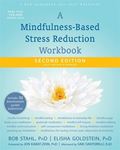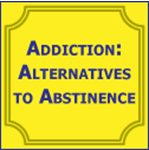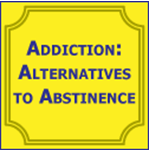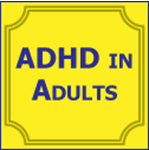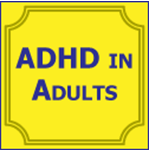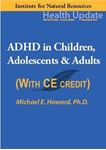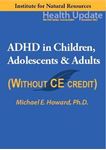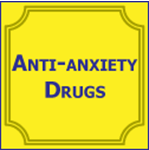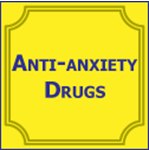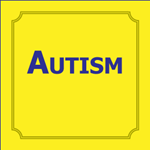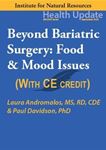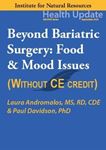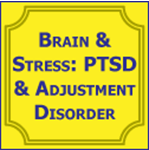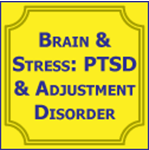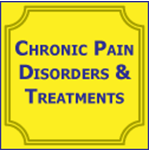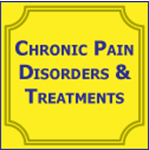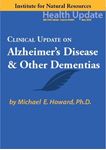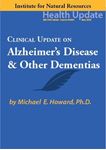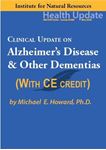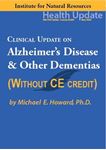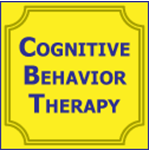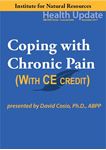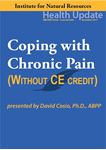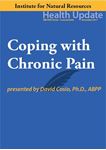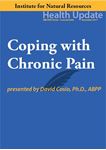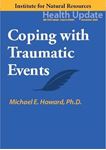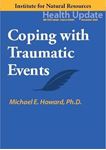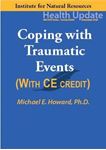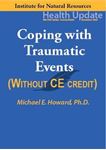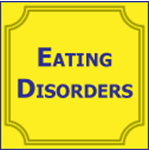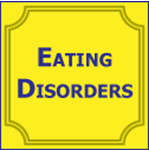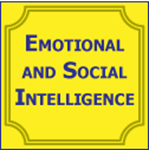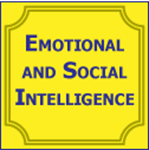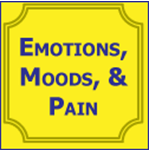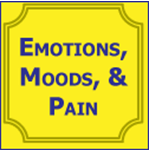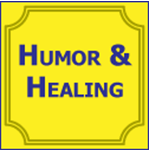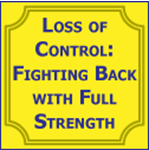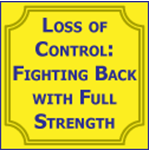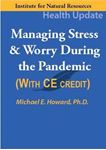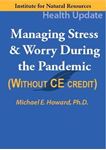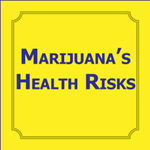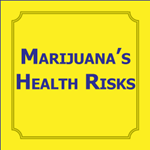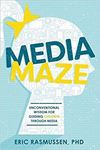You have no items in your shopping cart.
Psychology
A Mindfulness-Based Stress Reduction Workbook *NO CE
In this fully revised and updated second edition, you'll learn how to use MBSR to alleviate stress, anxiety, panic, depression, chronic pain, and a wide range of medical conditions. As you work through this user-friendly guide, you'll discover how to replace unhealthy, stress-promoting habits with mindful ones—a skill that will last a lifetime.
$20.00
Addiction: Alternatives to Abstinence
Identifies the three major treatment models for addictive behaviors and a brief history of each: (a) the moral model, (b) the medical model, (c) the harm-reduction model. Describes the most recent research on the effectiveness of abstinence and harm-reduction addiction treatment programs and who each approach is best suited for. Lists protective behavioral strategies (PBS) used in moderating alcohol use among college students. Identifies the risk factors for “overdose” and list the strategies for prevention. Describes approaches to treating opioid dependence and the benefits and drawbacks of each.
$30.00
Addiction: Alternatives to Abstinence - Ebooklet
Identifies the three major treatment models for addictive behaviors and a brief history of each: (a) the moral model, (b) the medical model, (c) the harm-reduction model. Describes the most recent research on the effectiveness of abstinence and harm-reduction addiction treatment programs and who each approach is best suited for. Lists protective behavioral strategies (PBS) used in moderating alcohol use among college students. Identifies the risk factors for “overdose” and list the strategies for prevention. Describes approaches to treating opioid dependence and the benefits and drawbacks of each.
$25.00
ADHD In Adults
Identifies the rates of incidence and essentials of diagnosis of Attention Deficit Hyperactivity Disorder. Discusses the issues and controversies in diagnosis of adult ADHD. Describes the clinical essentials of differential diagnosis of ADHD in adults and presentations of other disorders with similar core symptoms. Identiies medications (stimulants and non-stimulants) that may be used in pharmacological management of ADHD in the adult population. Discusses the recent developments in the field of non-stimulant medications for adult ADHD, including cholinergic drugs and atypical antidepressants.
$30.00
ADHD In Adults - Ebooklet
Identifies the rates of incidence and essentials of diagnosis of Attention Deficit Hyperactivity Disorder. Discusses the issues and controversies in diagnosis of adult ADHD. Describes the clinical essentials of differential diagnosis of ADHD in adults and presentations of other disorders with similar core symptoms. Identiies medications (stimulants and non-stimulants) that may be used in pharmacological management of ADHD in the adult population. Discusses the recent developments in the field of non-stimulant medications for adult ADHD, including cholinergic drugs and atypical antidepressants.
$25.00
ADHD in Children, Adolescents, & Adults - Streaming Video - 6 Hours (w/Home-study exam)
Describes the effects of ADHD on attention, emotional control, impulse control, and executive functions. Describes the clinical presentations of ADHD and current diagnostic criteria. Discusses the genetic, developmental, neurologic and environmental causes of ADHD. Describes the development, symptoms, and impact of ADHD as they relate to children, adolescents, and adults. identify effective ADHD treatments focused on behavior management, diet, exercise, and sleep. Discusses the stimulant and non-stimulant medications for ADHD and their effectiveness. Discusses how the recent empirical research in this course can be translated to clinical practices to improve patient care and outcome. Describes, for this course, the implications for dentistry, mental health, pharmacy, nursing, occupational, physical therapy and other healthcare professions.
$83.00
ADHD in Children, Adolescents, & Adults - Streaming Video only *NO CE - 6 hours
Describes the effects of ADHD on attention, emotional control, impulse control, and executive functions. Describes the clinical presentations of ADHD and current diagnostic criteria. Discusses the genetic, developmental, neurologic and environmental causes of ADHD. Describes the development, symptoms, and impact of ADHD as they relate to children, adolescents, and adults. identify effective ADHD treatments focused on behavior management, diet, exercise, and sleep. Discusses the stimulant and non-stimulant medications for ADHD and their effectiveness. Discusses how the recent empirical research in this course can be translated to clinical practices to improve patient care and outcome. Describes, for this course, the implications for dentistry, mental health, pharmacy, nursing, occupational, physical therapy and other healthcare professions.
$69.00
Anti-Anxiety Drugs
Outlines the diagnostic issues of various anxiety disorders including GAD, panic disorder, OCD, and social phobia. Identifies differentials of anxiety disorders and the nomenclature of phobias and related conditions. Describes commonly used pharmacological agents and their interactions, side effects, and expected effects. Addresses the issue of co-administration of these drugs with dental drugs. Identifies approaches to co-management of anxiety and depression, anxiety and alcohol-related disorders, and acute toxicity of benzodiazepines.
$30.00
Anti-Anxiety Drugs - Ebooklet
Outlines the diagnostic issues of various anxiety disorders including GAD, panic disorder, OCD, and social phobia. Identifies differentials of anxiety disorders and the nomenclature of phobias and related conditions. Describes commonly used pharmacological agents and their interactions, side effects, and expected effects. Addresses the issue of co-administration of these drugs with dental drugs. Identifies approaches to co-management of anxiety and depression, anxiety and alcohol-related disorders, and acute toxicity of benzodiazepines.
$25.00
Autism - 3 Hours
Describes the differences between the previous Diagnostic and Statistical Manual of Mental Disorders (DSM-IV), and the current one (DSM-5) in terms of how autism, autism spectrum disorder (ASD) and related disorders are viewed and diagnosed. Identifies the physiological, familial, and psychological issues in the clinical diagnosis of autism spectrum disorder. Identifies the issues of toxicity from heavy metal (mercury, lead) and other pathogenic factors in the development of autism spectrum disorder. Identifies medications used in management of various clinical resentations and comorbidities of autism spectrum disorder. Discusses appropriate nonpharmacological (general health, psychological, and behavioral) approaches to the treatment of autism spectrum disorder.
$30.00
Beyond Bariatric Surgery - Streaming Video - 6 Hours (w/Home-study exam)
Describes the physiological and anatomical changes associated with bariatric surgery, endoscopic bariatric therapies, and fat-reducing procedures. Identifies the components of nutritional and psychological preoperative assessments for patients undergoing bariatric surgery. Describes pre-operative and post-operative nutrition guidelines for bariatric surgery patients.
4) identify mental, physical, and emotional challenges faced by pre-operative and post-operative bariatric surgery patients. Assesses and manage nutrition complications including constipation, diarrhea, dumping syndrome, reactive hypoglycemia, gout, and kidney stones in post-operative bariatric surgery patients. Applies strategies for running effective support groups for pre-operative and post-operative bariatric surgery patients. Identifies appropriate treatments for managing post-operative weight regain. Describes how the information in this course can be utilized to improve patient care and patient outcomes.
$83.00
Beyond Bariatric Surgery - Streaming Video only *NO CE - 6 Hours
Describes the physiological and anatomical changes associated with bariatric surgery, endoscopic bariatric therapies, and fat-reducing procedures. Identifies the components of nutritional and psychological preoperative assessments for patients undergoing bariatric surgery. Describes pre-operative and post-operative nutrition guidelines for bariatric surgery patients.
4) identify mental, physical, and emotional challenges faced by pre-operative and post-operative bariatric surgery patients. Assesses and manage nutrition complications including constipation, diarrhea, dumping syndrome, reactive hypoglycemia, gout, and kidney stones in post-operative bariatric surgery patients. Applies strategies for running effective support groups for pre-operative and post-operative bariatric surgery patients. Identifies appropriate treatments for managing post-operative weight regain. Describes how the information in this course can be utilized to improve patient care and patient outcomes.
$69.00
Brain & Stress: PTSD & Adjustment Disorder
Explains the principles of diagnosis and differential diagnosis of Adjustment Disorder, the controversy that surrounds its classification, and its proper place in the hierarchy of psychiatric disorders. Identifies helpful strategies for patients with Adjustment Disorder. Outlines the issues of diagnosis and management of Post-Traumatic Stress Disorder. Describes Shared Psychotic Disorder and its diagnosis and treatment. Describes ways to cope with stress and recommends appropriate coping strategies to patients.
$30.00
Brain & Stress: PTSD & Adjustment Disorder - Ebooklet
Explains the principles of diagnosis and differential diagnosis of Adjustment Disorder, the controversy that surrounds its classification, and its proper place in the hierarchy of psychiatric disorders. Identifies helpful strategies for patients with Adjustment Disorder. Outlines the issues of diagnosis and management of Post-Traumatic Stress Disorder. Describes Shared Psychotic Disorder and its diagnosis and treatment. Describes ways to cope with stress and recommends appropriate coping strategies to patients.
$25.00
Chronic Pain Disorders & Treatments
Describes some of the effects of chronic pain on the brain. Lists the major chronic pain disorders and their treatments. Explains the differences between migraine and tension headaches. Identifies the major sources of back pain and their effective treatments. Describes the differences between trigger points and tender points. Lists methods and techniques of lowering the risk of chronic pain disorders. Discusses the concept of multidisciplinary pain management. Describes the applications of non-pharmacologic pain treatments like cognitive-behavioral therapy, biofeedback, and meditation.
$30.00
Chronic Pain Disorders & Treatments - Ebooklet
Describes some of the effects of chronic pain on the brain. Lists the major chronic pain disorders and their treatments. Explains the differences between migraine and tension headaches. Identifies the major sources of back pain and their effective treatments. Describes the differences between trigger points and tender points. Lists methods and techniques of lowering the risk of chronic pain disorders. Discusses the concept of multidisciplinary pain management. Describes the applications of non-pharmacologic pain treatments like cognitive-behavioral therapy, biofeedback, and meditation.
$25.00
Clinical Update on Alzheimer's Disease & Other Dementias - DVD - 6 Hours (w/home-study exam)
Describes the differences between normal and abnormal brain aging. Lists measures to preserve brain function and reduce the risk for cognitive decline. Defines dementia and describe common dementia syndromes. Describes the major characteristics of and treatments for Alzheimer’s disease. Lists medications and common clinical conditions that can cause dementia-like symptoms. Describes how the information in this course can be utilized to improve patient care and patient outcomes. Describes for this course, the implications for nursing, dentistry, mental health, and other health care professions.
$83.00
Clinical Update on Alzheimer's Disease & Other Dementias - DVD Only *NO CE - 6 hours
Describes the differences between normal and abnormal brain aging. Lists measures to preserve brain function and reduce the risk for cognitive decline. Defines dementia and describe common dementia syndromes. Describes the major characteristics of and treatments for Alzheimer’s disease. Lists medications and common clinical conditions that can cause dementia-like symptoms. Describes how the information in this course can be utilized to improve patient care and patient outcomes. Describes for this course, the implications for nursing, dentistry, mental health, and other health care professions.
$69.00
Clinical Update on Alzheimer's Disease & Other Dementias - Streaming Video - 6 Hours (w/Home-study exam)
Describes the differences between normal and abnormal brain aging. Lists measures to preserve brain function and reduce the risk for cognitive decline. Defines dementia and describe common dementia syndromes. Describes the major characteristics of and treatments for Alzheimer’s disease. Lists medications and common clinical conditions that can cause dementia-like symptoms. Describes how the information in this course can be utilized to improve patient care and patient outcomes. Describes for this course, the implications for nursing, dentistry, mental health, and other health care professions.
$83.00
Clinical Update on Alzheimer's Disease & Other Dementias - Streaming Video Only *NO CE - 6 hours
Describes the differences between normal and abnormal brain aging. Lists measures to preserve brain function and reduce the risk for cognitive decline. Defines dementia and describe common dementia syndromes. Describes the major characteristics of and treatments for Alzheimer’s disease. Lists medications and common clinical conditions that can cause dementia-like symptoms. Describes how the information in this course can be utilized to improve patient care and patient outcomes. Describes for this course, the implications for nursing, dentistry, mental health, and other health care professions.
$69.00
Cognitive Behavior Therapy
Identifies the major components of cognitive behavioral therapy and the causative relationship between environmental events, thoughts, emotions, and behavior. Lists the common types of flawed and irrational beliefs that create depression, anxiety, and stress. Describes the “ABC” process of converting irrational thinking into rational thinking. Describes cognitive-behavioral treatment strategies for depression and anxiety. Defines “allostasis” and “allostatic load” aspects of stress and describe the “Stress Inoculation Training” approach to stress management.
$30.00
Coping with Chronic Pain - Streaming Video - 6 Hours (w/home-study credit)
Explains the current state of pain management in the United States. Describes the multidisciplinary approach to pain management. Reviews the 23 different pain management modalities currently available. Describes steps to create a comprehensive pain management plan. Lists the five key coping skills for helping chronic pain patients. Discusses treatment options for chronic dental and facial pain. Describes how the information in this course can be utilized to improve patient care and patient outcomes. Describes the implications for dentistry, mental health, and other health professions.
$83.00
Coping with Chronic Pain - Streaming Video only *NO CE - 6 hours
Explains the current state of pain management in the United States. Describes the multidisciplinary approach to pain management. Reviews the 23 different pain management modalities currently available. Describes steps to create a comprehensive pain management plan. Lists the five key coping skills for helping chronic pain patients. Discusses treatment options for chronic dental and facial pain. Describes how the information in this course can be utilized to improve patient care and patient outcomes. Describes the implications for dentistry, mental health, and other health professions.
$69.00
Coping with Chronic Pain: Presented by David Cosio - DVD - 6 Hours (w/Home-study)
Explains the current state of pain management in the United States. Describes the multidisciplinary approach to pain management. Reviews the 23 different pain management modalities currently available. Describes steps to create a comprehensive pain management plan. Lists the five key coping skills for helping chronic pain patients. Discusses treatment options for chronic dental and facial pain. Describes how the information in this course can be utilized to improve patient care and patient outcomes. Describes the implications for dentistry, mental health, and other health professions.
$83.00
Coping with Chronic Pain: Presented by David Cosio - DVD only *NO CE - 6 hours
Explains the current state of pain management in the United States. Describes the multidisciplinary approach to pain management. Reviews the 23 different pain management modalities currently available. Describes steps to create a comprehensive pain management plan. Lists the five key coping skills for helping chronic pain patients. Discusses treatment options for chronic dental and facial pain. Describes how the information in this course can be utilized to improve patient care and patient outcomes. Describes the implications for dentistry, mental health, and other health professions.
$69.00
Coping with Traumatic Events - DVD - 6 Hours (w/Home-study exam)
Identifies the major causes and pathways of the stress response. Describes how worry, traumatic events, threats, and crises can cause anxiety and trauma-related disorders. Lists the characteristics of acute stress disorder and the principles of crisis intervention. Identifies the symptoms, subtypes, and treatments of PTSD (post-traumatic stress disorder). Discusses effective stress management strategies including resilience building, mindfulness, relaxation, cognitive behavioral therapy, and medications. Lists the methods of managing compassion fatigue in caregivers and health care professionals. Describes how the information in this course can be utilized to improve patient care outcomes across disciplines. Describes, for this course, the implications for nursing, dentistry, mental health, and other health professionals and improve patient treatment co-morbidity outcomes for occupational and physical therapy.
$83.00
Coping with Traumatic Events - DVD only *NO CE - 6 hours
Identifies the major causes and pathways of the stress response. Describes how worry, traumatic events, threats, and crises can cause anxiety and trauma-related disorders. Lists the characteristics of acute stress disorder and the principles of crisis intervention. Identifies the symptoms, subtypes, and treatments of PTSD (post-traumatic stress disorder). Discusses effective stress management strategies including resilience building, mindfulness, relaxation, cognitive behavioral therapy, and medications. Lists the methods of managing compassion fatigue in caregivers and health care professionals. Describes how the information in this course can be utilized to improve patient care outcomes across disciplines. Describes, for this course, the implications for nursing, dentistry, mental health, and other health professionals and improve patient treatment co-morbidity outcomes for occupational and physical therapy.
$69.00
Coping with Traumatic Events - Streaming Video - 6 Hours (w/Home-study exam)
Identifies the major causes and pathways of the stress response. Describes how worry, traumatic events, threats, and crises can cause anxiety and trauma-related disorders. Lists the characteristics of acute stress disorder and the principles of crisis intervention. Identifies the symptoms, subtypes, and treatments of PTSD (post-traumatic stress disorder). Discusses effective stress management strategies including resilience building, mindfulness, relaxation, cognitive behavioral therapy, and medications. Lists the methods of managing compassion fatigue in caregivers and health care professionals. Describes how the information in this course can be utilized to improve patient care outcomes across disciplines. Describes, for this course, the implications for nursing, dentistry, mental health, and other health professionals and improve patient treatment co-morbidity outcomes for occupational and physical therapy.
$83.00
Coping with Traumatic Events - Streaming Video only *NO CE - 6 hours
Identifies the major causes and pathways of the stress response. Describes how worry, traumatic events, threats, and crises can cause anxiety and trauma-related disorders. Lists the characteristics of acute stress disorder and the principles of crisis intervention. Identifies the symptoms, subtypes, and treatments of PTSD (post-traumatic stress disorder). Discusses effective stress management strategies including resilience building, mindfulness, relaxation, cognitive behavioral therapy, and medications. Lists the methods of managing compassion fatigue in caregivers and health care professionals. Describes how the information in this course can be utilized to improve patient care outcomes across disciplines. Describes, for this course, the implications for nursing, dentistry, mental health, and other health professionals and improve patient treatment co-morbidity outcomes for occupational and physical therapy.
$69.00
Eating Disorders
Identifies the proper classification, co-morbidities, and diagnostic approaches to eating disorders. Outlines the etiology and prognosis in eating disorders. Discusses the issues of oromaxillary pathology observed in eating disorders. Describes the various aspects of effective management of eating disorders. Explains the unhealthy weight obsession, self-image issues, and erroneous beliefs about food, diet, weight, and health.
$30.00
Eating Disorders - Ebooklet
Identifies the proper classification, co-morbidities, and diagnostic approaches to eating disorders. Outlines the etiology and prognosis in eating disorders. Discusses the issues of oromaxillary pathology observed in eating disorders. Describes the various aspects of effective management of eating disorders. Explains the unhealthy weight obsession, self-image issues, and erroneous beliefs about food, diet, weight, and health.
$25.00
Emotional & Social Intelligence
Explains the concept of emotional intelligence. Describes the relationship between emotions and the brain. Outlines how to use emotional intelligence to reduce negative moods. Explains the concept of social intelligence and its components. Identifies the neural circuitry underlying interpersonal behavior. Describes educational programs designed to heighten emotional and social intelligence.
$30.00
Emotional & Social Intelligence - Ebooklet
Explains the concept of emotional intelligence. Describes the relationship between emotions and the brain. Outlines how to use emotional intelligence to reduce negative moods. Explains the concept of social intelligence and its components. Identifies the neural circuitry underlying interpersonal behavior. Describes educational programs designed to heighten emotional and social intelligence.
$25.00
Emotions, Moods, & Pain
Lists and describe the six basic emotions that have unique facial expressions. Explains the difference between emotions and moods. Discusses the relationship between emotions, moods, and pain. Identifies brain structures and neurochemicals that play a role in both moods and pain. Discusses the relationship of pain to both acute stress and chronic stress. Lists the similarities between stress management and pain management. Identifies the similar brain areas involved in both physical and emotional pain. Explains the interactions between anxiety disorders, depression, and pain. Discusses cognitive behavioral therapy and its role in pain management.
$30.00
Emotions, Moods, & Pain - Ebooklet
Lists and describe the six basic emotions that have unique facial expressions. Explains the difference between emotions and moods. Discusses the relationship between emotions, moods, and pain. Identifies brain structures and neurochemicals that play a role in both moods and pain. Discusses the relationship of pain to both acute stress and chronic stress. Lists the similarities between stress management and pain management. Identifies the similar brain areas involved in both physical and emotional pain. Explains the interactions between anxiety disorders, depression, and pain. Discusses cognitive behavioral therapy and its role in pain management.
$25.00
Humor & Healing
Describes the different definitions of humor. Identifies the various theories of humor. Discusses the physiology and therapeutic effects of laughter. Discusses the use of humor in health care settings and the role of humor for health care professionals. Defines the relationship between children and humor and the elderly and humor. Identifies some strategies for adding humor to health care practices.
$30.00
Living to be 100 - 2nd edition
Do you want to live the longest, healthiest, happiest life you can with the best mental and physical functioning? This home-study course is literally about the secret to life: the lifestyle choices you can make that will increase the odds of having the longest and healthiest life you can. You will find out that there are 16 lifestyle characteristics that these oldest people tend to have in common, no matter where they live in the world.
$35.00
Living to be 100 2nd edition - EBOOK
Do you want to live the longest, healthiest, happiest life you can with the best mental and physical functioning? This home-study course is literally about the secret to life: the lifestyle choices you can make that will increase the odds of having the longest and healthiest life you can. You will find out that there are 16 lifestyle characteristics that these oldest people tend to have in common, no matter where they live in the world.
$20.00
Living to be 100 2nd edition - EBOOK only *NO CE
Do you want to live the longest, healthiest, happiest life you can with the best mental and physical functioning? This home-study course is literally about the secret to life: the lifestyle choices you can make that will increase the odds of having the longest and healthiest life you can. You will find out that there are 16 lifestyle characteristics that these oldest people tend to have in common, no matter where they live in the world.
$15.00
Loss of Control: Fighting Back with Full Strength
Describes the issues related to stress-induced feelings of loss of control, the physiological and psychological mechanisms behind these issues, and means of coping with them. Identifies grief-, aggression- and suicide-related trends in both society and the individual and identifies the neurobiologic mechanisms involved. Develops approaches to the rehabilitation of patients who have loss of control issues that lead to substance abuse. Identifies patients at risk for disorders that may be triggered by the feeling of loss of control.
$30.00
Loss of Control: Fighting Back with Full Strength - Ebooklet
Describes the issues related to stress-induced feelings of loss of control, the physiological and psychological mechanisms behind these issues, and means of coping with them. Identifies grief-, aggression- and suicide-related trends in both society and the individual and identifies the neurobiologic mechanisms involved. Develops approaches to the rehabilitation of patients who have loss of control issues that lead to substance abuse. Identifies patients at risk for disorders that may be triggered by the feeling of loss of control.
$25.00
Love Me True: Overcoming Deception in Relationships
This course will explore ways partners get caught in patterns of subtle and blatant deception. It will use fun stories from real couples and examples from research to examine how cognitive and emotional processes cause blindness and rationalization, and distort couples’ perceptions. This course will identify research-based strategies to increase trust and connection, and professionals can use this information to identify and appropriately address issues related to self-deception and honesty in the individuals with whom they work.
$40.00
Major Depression & Bipolar Disorders - 3rd edition
This book contains a synopsis of the genetic, biological, and psychological theories pertaining to bipolar spectrum disorders. An update of diagnostic considerations, assessment instruments, and evidence-based treatment techniques commonly employed in diagnosing, assessing, and treating bipolar spectrum disorderpatients is provided. The most recent literature is presented throughout the book concerning the appropriate data-based applications, outcomes, and limitations of the assessment and treatment procedures.
$35.00
Managing Stress & Worry During the Pandemic - Streaming Video - 6 Hours (w/Home-study)
Describes how survival behavior is produced by the brain. Identifies the characteristics of cognitive appraisals, core beliefs, emotions, and moods. Discusses the positive and negative effects and impacts of acute and chronic stress, and the major causes and pathways of the stress response. Describes the physical, mental, and emotional consequences of COVID-19 for patients, their families, and healthcare providers. Discusses methods of preventing chronic stress and anxiety during the COVID-19 pandemic by building resilience and optimism. Discusses effective stress management strategies, including mindfulness, relaxation body therapies, cognitive-behavioral therapy, medications, diet, and exercise. Describes how the information in this course can be utilized across the disciplines to improve patient care outcomes.
$83.00
Managing Stress & Worry During the Pandemic - Streaming Video only *NO CE - 6 Hours
Describes how survival behavior is produced by the brain. Identifies the characteristics of cognitive appraisals, core beliefs, emotions, and moods. Discusses the positive and negative effects and impacts of acute and chronic stress, and the major causes and pathways of the stress response. Describes the physical, mental, and emotional consequences of COVID-19 for patients, their families, and healthcare providers. Discusses methods of preventing chronic stress and anxiety during the COVID-19 pandemic by building resilience and optimism. Discusses effective stress management strategies, including mindfulness, relaxation body therapies, cognitive-behavioral therapy, medications, diet, and exercise. Describes how the information in this course can be utilized across the disciplines to improve patient care outcomes.
$69.00
Marijuana's Health Risks - 3rd edition
Discusses common negative health and mental health effects of highpotency cannabis products. Names medications with which cannabanoids may adversely interact. Describes ways exposure to THC can harm young people’s development and health. Lists the characteristics of cannabis hyperemesis syndrome. Identifies the health risks of using synthetic THC products.
$30.00
Marijuana's Health Risks - 3rd edition - Ebooklet
Discusses common negative health and mental health effects of highpotency cannabis products. Names medications with which cannabanoids may adversely interact. Describes ways exposure to THC can harm young people’s development and health. Lists the characteristics of cannabis hyperemesis syndrome. Identifies the health risks of using synthetic THC products.
$25.00
Media Maze: Guiding Children through the Digital Age
This course will explore the prevalence of children’s media use, many of the media effects that are of most concern to those interested in the well-being of youth, and the social scientific theories that explain how children’s brains cognitively and emotional process media content. Finally, the course identifies specific strategies that can be taken to help youth avoid the potentially negative effects, and enjoy the potentially positive effects, of media exposure.
$40.00
Meditation
Defines what meditation is. Identifies the benefits of meditation and the research supporting these benefits. Reviews the history of meditation and how it came to be popular in North America. Identifies the most popular meditation techniques. Discusses how to troubleshoot challenges that may arise while meditating.
$30.00
Meditation - Ebooklet
Defines what meditation is. Identifies the benefits of meditation and the research supporting these benefits. Reviews the history of meditation and how it came to be popular in North America. Identifies the most popular meditation techniques. Discusses how to troubleshoot challenges that may arise while meditating.
$25.00

